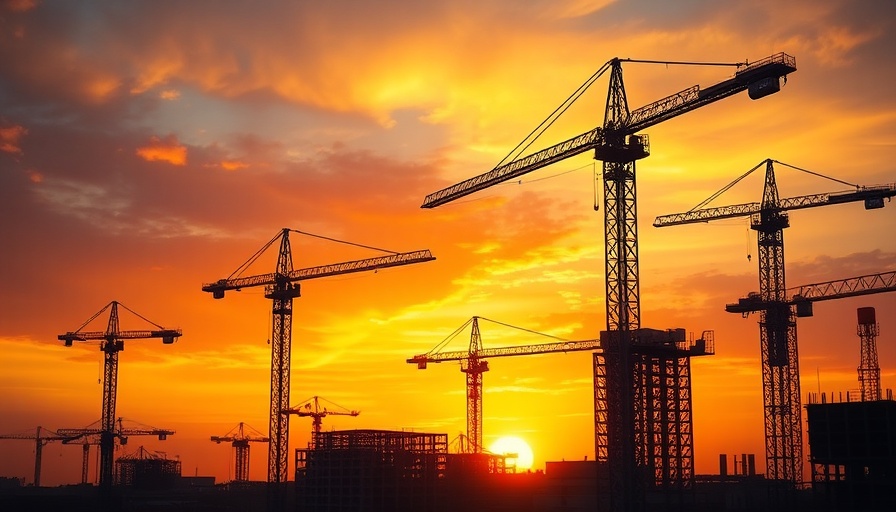
Seizing Opportunities in a Changing Landscape
The construction industry faces a pivotal moment in 2025, balancing the fine line between expected growth and economic uncertainty. According to recent predictions, construction spending will see an increase of around 5.2%, driven largely by easing financial regulations and potential interest rate cuts. For construction companies, this signals a crucial opportunity to pivot and adapt their strategies to seize growth where it exists.
Understanding Growth Drivers
Despite a downturn in construction starts—down by 3.5% the previous year—the financial climate is shifting positively. Chief Economist Michael Guckes from ConstructConnect emphasizes, "Lower interest rates will function as a first and necessary step in reinvigorating nonresidential construction activity." This sets the stage not only for nonresidential projects but also for residential construction, where affordable housing plays a significant role. With a projected 3.6% increase in residential spending, those in the housing sector must ready themselves for an uptick in demand.
Forecasting Project Types with the Highest Growth
Notably, sectors like power generation present fertile ground for investment. The rise of electric vehicles and tech devices, combined with the burgeoning need for data centers, points towards major growth in projects focused on wind and nuclear energy. Anticipated spending within manufacturing construction—set to increase by 13.4% this year—illustrates a shifting focus toward sustainable and efficient energy solutions. Construction companies should quickly pivot to engage in these higher-demand areas.
The Influence of Tariffs on Material Costs
Economic considerations extend beyond mere growth potentials. Tariffs on imported goods remain a looming threat, potentially inflating material costs for construction firms. This factor may lead some companies to reevaluate their sourcing strategies, possibly bolstering domestic manufacturing. Guckes warns that this could reshape the industry's growth trajectory significantly, emphasizing the importance of strategic planning.
Future Predictions and Planning
The construction landscape is undeniably in the midst of transformation. Understanding the drivers behind the predicted spikes in spending helps firms not just to survive but thrive in this unpredictable economy. With the right insights and forward-thinking strategies, construction companies can capitalize on lucrative projects and navigate through adversity effectively.
Actionable Strategies for Construction Companies
So, what can construction professionals do with these insights? Firstly, it’s essential to refine business models. Emphasizing green construction practices and emerging technologies might not just attract clients but position firms ahead of competitors. Secondly, diversifying project portfolios can mitigate risks associated with tariffs and economic fluctuations. Finally, investing in workforce training ensures that companies remain adaptable as industry demands shift.
Conclusion: The Road Ahead for Construction Professionals
The construction industry has a unique chance to recalibrate and respond to changing economic conditions. With careful navigation through the uncertainty and a strategic focus on growth areas, professionals can turn potential challenges into opportunities.
As you gear up for the future, consider how these insights can guide your business decisions and strategies. Planning for changes in market dynamics could open new doors in an evolving economic landscape.
 Add Row
Add Row  Add
Add 




Write A Comment